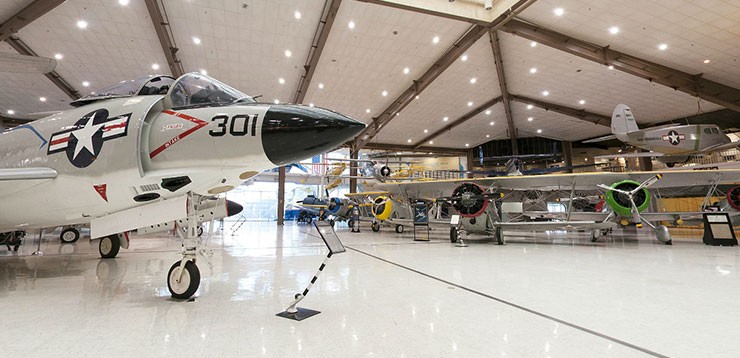
South Wing
The main floor of the South Wing is home to the Museum's World War I exhibit, Cubi Bar Cafe, and aircraft collections from two great eras of experimentation, the Golden Age of the '20s and '30s and the early Cold War era of the '50s and early '60s. During the Golden Age that followed World War I and the record-breaking flight of the NC-4, Naval Aviation became a formidable force in the Navy, just in time for its ultimate test during World War II. The Bureau of Aeronautics was formed in 1921 under Rear Admiral William Moffett and under his leadership the Navy's early aircraft carriers were built, aircraft procurement and aviator training expanded, and Naval Aviation successfully developed into a potent, fleet-deployed weapon of war.
In the Cold War collection, Korean War-era aircraft such as the F4U-4 Corsair and MiG-15 take flight overhead while radically designed jets such as the F7U Cutlass illustrate the growing pains of high-performance aircraft. Some on display, such as the F11F Tiger and F4D Skyray, were short-lived but capable aircraft, while others, such as the F3H Demon, were infamous for their troubled development. However, these designs led to the development of the Navy's superb fighter and attack aircraft of the Vietnam Era, such as the F-8 Crusader and F-4 Phantom II on display in Hangar Bay One.


